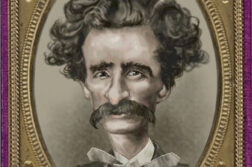Editor’s Note: This “Open Letter” started as a lengthy letter to the editor, but it was too long for that format and warranted more prominent placement. The author was so kind as to adapt the letter to this format.
I WISH TO RESPOND to an article that appeared in the May-June 2022 issue of this magazine titled “How Three Activists Stopped the Madness.” While the article is a creditable take on the more public and flamboyant side of the story, it leaves out the behind-the-scenes deliberations and actions that led to the APA’s momentous decision.
In December 1973, the American Psychiatric Association decided to remove “Homosexuality” per se as a mental illness diagnosis from the Diagnostic and Statistical Manual (Volume 2). That decision turned out to be widely important. Not only did many major national and international mental health groups soon support the change, but many laws in many countries changed as well. Many customs and policies and arrangements changed; much social understanding changed; and a great deal more art and sensible popular and scientific writing about homosexuality was published than had appeared before 1973.
Some reports of what led up to that decision, including the G&LR piece on that subject to which I referred, stress the picturesque moments—such as the 1972 panel featuring Barbara Gittings, Frank Kameny, and a masked John Fryer—which were powerful and useful, but often they don’t do justice to the many quieter, cooperative steps that were essential to the change. The headline to the piece, with its reference to “stopping the madness,” is a typically oversimplified summary. The three people on that panel helped the cause, to be sure, but a lot of other work, by a good many other people—as well as some good luck and timing—were essential to success.
Lawrence Hartmann, MD, a past president of the American Psychiatric Association, is a child psychiatrist and activist who played a critical role in the APA’s declassification of homosexuality as a mental illness.






